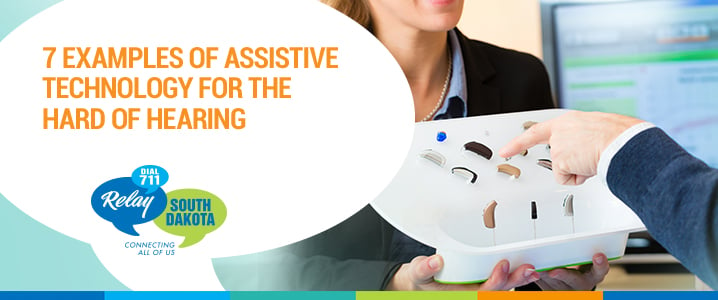
7 Examples of Assistive Technology for the Hard-of-Hearing

Living with hearing loss doesn’t need to be frustrating—there are plenty of technology options to help overcome potential challenges posed by hearing loss.
Let’s take a look at some of the technology used to assist people who are deaf or hard of hearing.
Personal Frequency Modulation (FM) Systems
FM systems incorporate transmitter microphones, used by the speaker, and a receiver attached to a hearing aid, used by the listener. The transmitter can be incorporated into an already-existing sound system. These systems are commonly used in classrooms or other public meeting
places, such as conference rooms or churches.
Sound-Field Systems
Sound-field systems work similarly to FM systems, but, instead of transmitting sound directly to an individual’s ear, the sound is broadcast to mounted speakers in a room or even to portable speakers. The microphones are the same as ones used for FM systems.
A sound-field system is particularly great for classrooms with multiple hard-of-hearing children.
Behind-the-Ear (BTE) Aids
This type of hearing aid, often shortened to “BTE,” takes the form of a small, plastic case that sits behind the ear. The plastic casing is connected to an earmold by a piece of clear tubing. Younger children tend to use this style for growing and safety reasons.
In-the-Ear (ITE) Aids
In-the-ear hearing aids are shells that fill in the outer portions of the ear. They are larger than canal aids, making them easier to handle for some users.
In-the-Canal (ITC) and Completely-in-the-Canal (CIC) Aids
These hearing aids are made to fit partially or entirely in the user’s ear canal. The benefit of these types are their smaller sizes, making them less noticeable than BTE or ITE hearing aids. Due to their placement in the canal, they also offer some listening advantages.
Middle Ear Implants
Implants consist of two parts, one external and the other surgically implanted. The external processor transmits sound to the internal receiver. The implant works by moving bones in the middle ear or by vibrating the membrane window of the cochlea.
Middle ear implants are best suited for people experiencing conductive or sensorineural hearing loss. They are an alternative to conventional hearing aids, particularly when hearing aids can’t be applied due to collapsed/closed ear canals, malformed ears or outer ear infections.
Hearing Loops
Hearing loops, also referred to as audio-induction loops, are magnetic systems that send wireless signals to hearing aids. The hearing loop uses a wire placed around the perimeter of a determined area, such as a classroom or service counter. Sound from a compatible microphone is sent through an amplifier that directs the sound to the loop wire, which radiates a magnetic signal to hearing aids, provided the aid is set to a telecoil (“T”) setting.
Watch this video to get a better idea for how hearing loops operate.
Found in: Technology

